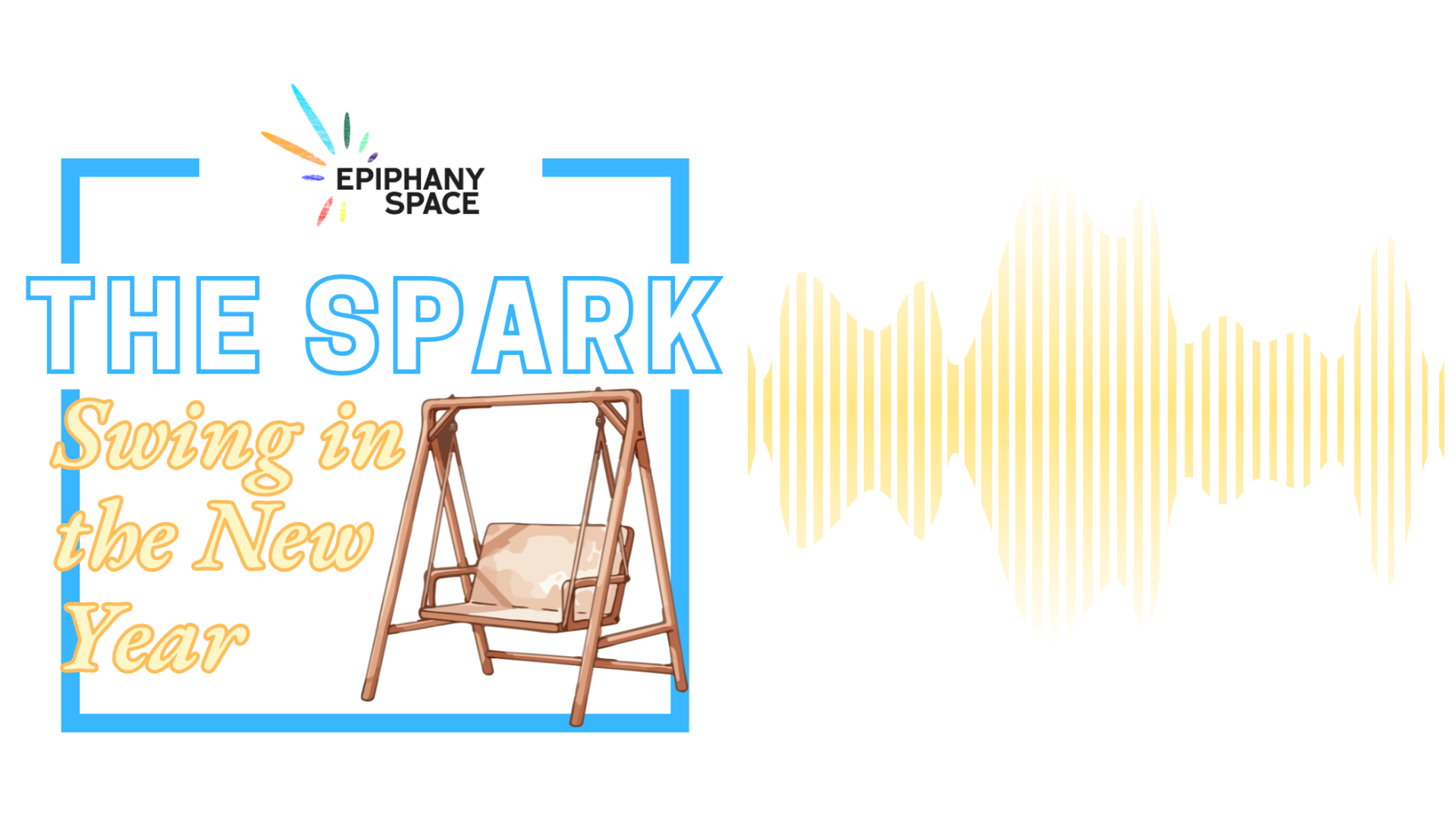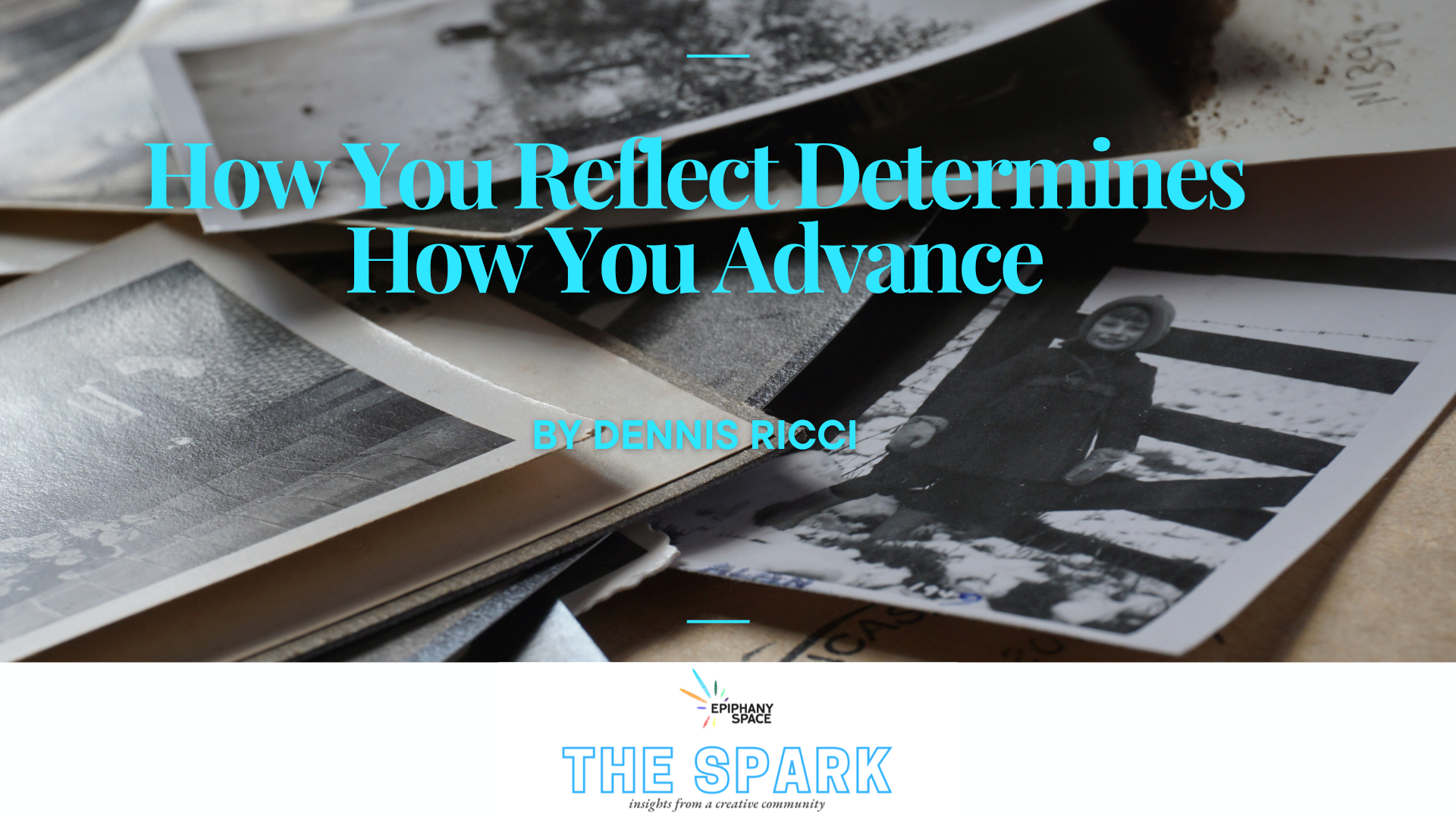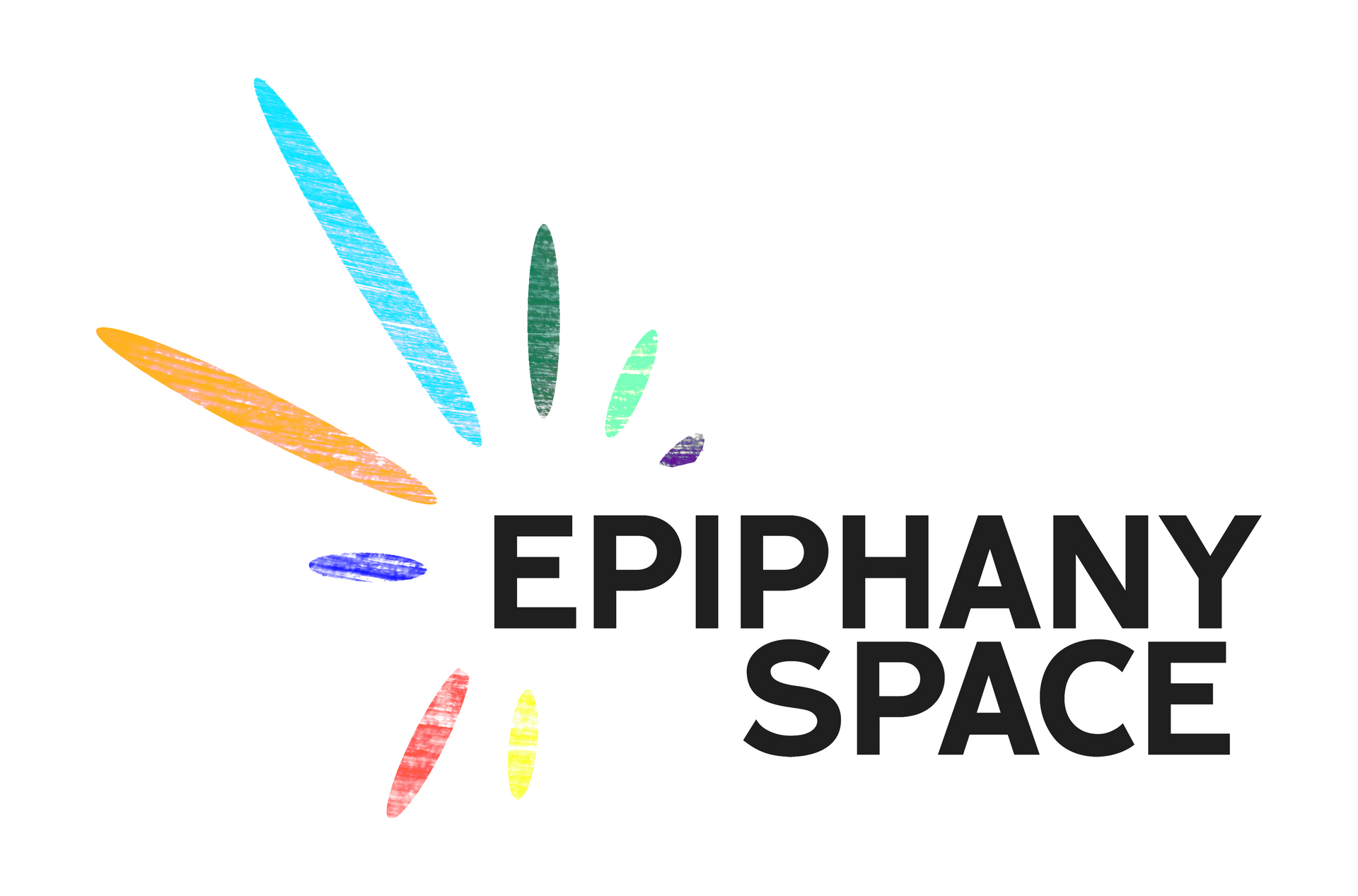Article
The Avalanche of Ideas
The Avalanche of Ideas
By Steven W. Alloway

The Avalanche of Ideas
By Steven W. Alloway
When was the last time you had an idea? For many of us creative types, the answer is typically along the lines of “sometime in the last 10 minutes.” But when was the last time you had a really good idea? Something you’re genuinely passionate about, something that’s really worth pursuing? Still in the last 10 minutes? Yeah, that’s where things get a bit trickier. Believe me, I know the feeling.
I just finished with a show this weekend: an immersive children’s show based on the biblical story of Balaam and his donkey. I’ve been working on this show with Spirit OnStage for a couple of months now. Then, about a week or two before we had our performance, I had an idea for what I wanted our next show to be. Nothing wrong with that, right? It’s good to have a plan, after all. So after Balaam is over, I can dive right into the next project.
It’s great in theory—until you’re supposed to be planning rehearsals, assembling props and costumes, and figuring out music options for your current show, which is less than a week away, and instead you find yourself planning out possible acts for the new show, which you haven’t even announced yet. And then you realize that the acts you’re thinking of would be better suited to the OTHER show you were planning, before you put it on hold to do a show about Balaam and his donkey.
We’ve all been there. OK, maybe not the specific scenario I described, but we’ve all had the general feeling of idea overload. There are so many things we want to do, and there are only so many hours in a day. Even if you’re juggling multiple projects at once (which some of us aren’t great at); even if you’re great with time management (which again, many of us aren’t); and even if you’re forgoing sleep (which you really, really shouldn’t do)… there are always going to be more ideas for projects than you have actual time to create projects.
As such, plenty of great ideas fall by the wayside, losing momentum or just being completely forgotten about. What can we do about it, though? How do we manage the Avalanche of Ideas to ensure as many of them as possible get their due? How do we figure out which ones are worth pursuing and which ones can be safely let go? How do we keep ourselves on track for our current projects without being pulled in all different directions and ultimately being driven insane?
Well, if your goal is “not being driven insane,” then you’re asking the wrong person. But for all the rest… I have a few ideas.
0. Become a Vampire
When you have more projects bouncing around than you could reasonably complete in one lifetime, immortality starts sounding like a pretty good option. As a vampire, you’ll have centuries at your disposal, to turn every single idea that crosses your mind into a fully realized finished product. As long as none of those projects require daylight. And as long as you don’t mind the whole blood thing. And as long as you’re OK with giving up garlic for the rest of—OK, you know what? Maybe this one’s not such a great option after all.
1. Categorize
Before writing this article, I did some research online to see what the experts have to say on dealing with the Avalanche of Ideas. Most of the advice I found began with some version of, “Write it down,” or “Make a list,” or “Get a notebook.” I won’t insult your intelligence by making those kinds of suggestions, though. I’m sure you know how to write your ideas down.
No doubt you have plenty of notebooks already, plus the Notes app on your phone, Word files on your computer, etc. They can definitely be helpful, but they don’t solve the problem on their own. After a while, the metaphorical Avalanche of Ideas becomes a more concrete Avalanche of Notebooks and Lists.
So what I like to do as I write my ideas down is put them into categories. Is this a simple idea, or a complicated one? Is it something I can do mostly on my own, or is it something I’ll need to rally the troops for? Do I have the resources? Will I need to do a fundraiser? Win the lottery?
Separate the categories in whatever way makes sense for you. A different notebook for each type of idea? One notebook with different sections? File folders? Folders on your computer?
That last one is what I use. I may have mentioned before, I have a computer folder called “Expensive Short Film Scripts.” It’s exactly what it sounds like. Scripts I’ve written for short films that I would love to make, but don’t have the money for. They range in complexity from, “Some scenes take place in a grocery store, and I can’t afford to rent one for filming,” to “An army of flying saucers invades London.” I don’t have the resources to do these scripts justice right now, but when I do, I have them ready.
There are countless other ways to categorize your ideas, as well. Is it a play? Short story? Song? Business idea? Is there a particular genre or theme that it fits into? The more specific you can get, the better.
I have probably a dozen different documents in various places, all of whose filenames are some variation on “Ideas.” When I’m looking for an idea for something, these files are typically the first place I look. And you know what? I almost never find anything there. There are tons of ideas there, but none of them are the type of idea I’m looking for. None of them fit the situation currently at hand.
But the more specific you get in labeling your categories, the easier it will be to find the idea you need—and the more likely it will be for those ideas to see the light of day.
2. Talk It Out
Like most things in life, the best way to get a handle on the Avalanche of Ideas is with the help of other people. Got a great idea, but you aren’t sure what to do with it, or how to put it in motion? Got 10 different ideas, and you’re not sure which to pursue first? Get a friend or group of friends you can bounce ideas off of. Someone you’re close with, someone you can trust, and who you know can provide you with good feedback beyond just, “Hey, great idea!”
Chances are, they’ll bring up things you never even considered. Even if you don’t take a single one of their suggestions, their fresh perspective—or even just the act of breaking your idea down for someone who hasn’t heard it before—can set your mind going in new directions and provide the clarity you need to continue.
This is also a great way of finding out who’s willing to help you out with these ideas, whenever you do start to pursue them. Back in February, I wrote a Spark article about
how difficult it is to ask for help, and how disheartening it can be when people say no. But by talking through your ideas with your close friends first, it can give you a good starting place. You can tell who’s excited about it so that, when it’s time to recruit people to help out, you know whom to start with. Sometimes, someone may even say, “Let me know when you start working on this! I’d love to be a part of it!” (Protip: When you get this kind of feedback on one of your ideas, it’s a pretty good sign to move that one up to the top of your list.)
Finally, talking through your ideas may lead you to discover that it’s actually a great idea for someone else. This has happened to me on occasion. I’ll have an awesome idea that I know I’ll never actually use. It’s not the sort of thing I’d actually be interested in pursuing—but it would be really cool if someone else did!
So I’ll think about which of my many immensely talented friends might be better suited to a project like this, and I’ll tell them about it. Do they actually follow up and try to do it? Sometimes yes, sometimes no. Sometimes it will spark in them a completely different idea. But either way, the idea has been given a good home, and it’s one less snowflake in my own avalanche.
3. Let It Rest
When sorting through your ideas, time sensitivity is another important factor to consider. Is this on a deadline? Is this something you’ve built up momentum on? Or will it keep awhile?
I mentioned earlier having put off doing a different show in order to mount my Balaam play. The other show was going to be a fundraiser dinner—something I was really excited about doing. It was also big and complicated and would require a whole lot of resources to pull off.
In the meantime, at my mother’s church, there was some excitement building with regards to the Bible story play we had done there a few months earlier. It was a big hit, people loved it, and the question became, “When are you going to do another one?”
And as it happened, I had a script ready and a plan for how to stage it—an idea I got while rehearsing for the previous play. But not yet. Fundraiser first, then Bible story play.
I was planning on doing the fundraiser dinner around March or April. It quickly became clear that that wasn’t nearly enough time to do things on the scale that I had planned. OK, so we could push it to May or June… But then after that, I’m going out of town. I won’t be back until the end of July, so the soonest a new Bible story play could be mounted would be August. I was planning on doing part of the show outside, though, and August would be way too hot for that. Maybe September or October, then. And by then, it’s been a full year since we did the previous play, and we’ll have lost much of the momentum that we built from it.
The fundraiser dinner had no momentum yet, though. It’s something that we could do anytime. And in fact, if we did decide to put it off, we’d have more time to gather resources and figure out logistics, to make it a truly great experience. The choice was clear. Balaam play now. Fundraiser dinner later.
This is one of the most important aspects of dealing with the Avalanche of Ideas: knowing which ones can wait. The other most important aspect is, of course, knowing when to come back to them, so they don’t have to wait forever.
Sometimes the best thing you can do with an idea is just to let it rest. Put it aside for a while and come back to it later. This accomplishes several things. It helps you to prioritize your projects and get a better understanding of their urgency, by identifying which ones can be put off and which ones can’t—and what will happen if you put Project A off vs. putting Project B off.
Letting your projects rest also helps you gain a new perspective. Right now, you have an idea, but maybe you’re not sure what to do with it. If you put it in a drawer and come back in a month, a year, a decade, you’ll have all new eyes to see it with and all new experiences to bring to the table as you move forward.
This is also a great way to discover which ideas won’t wait. Honestly, most of the ideas I have, the first thing I do is to put them aside, at least for a day or two. If I’m still thinking about it tomorrow, still considering ways that it could be done… Then I know I have a good idea that’s worth pursuing. And if I try to put it aside for longer, but instead I keep turning it over in my mind as I’m working on my current project… Then I have a pretty good idea of what my next project should be.
As for the ones that will wait… the key is to keep coming back to them. The longer you leave them in the drawer, the less likely they are ever to get out of it. An idea may not be ready right now, but you can still check in on it every now and then to see how it’s steeping. I do this periodically with my Expensive Short Film Scripts and similar projects that I’m nowhere near ready to move forward with. I’ll go through it, make some changes, jot down some ideas, and see if I have any new perspective to add. Even if it’s still not actually ready to come to fruition, I might be able to get a better handle on when and how it will be ready. And in the meantime, I can improve on what I’ve got.
Unfortunately, no matter how good you get at sorting through and dealing with your Avalanche of Ideas, you’ll never be able to do everything. And if you try, you’ll just end up getting buried. So unless you find a way to take the Vampire option, there are always going to be at least a few things you need to let go.
But even if some ideas never bear fruit, they can still find life in other ways. The seeds that were planted can still give way to other ideas, other projects, other avenues that never would have been open to you otherwise. You ever know what an idea may lead to, or how it may affect your creative journey. So instead of running from the Avalanche of Ideas, embrace it, go with it, learn to navigate it, and let it carry you to places you never imagined.




